
Roots
The story of textured hair, particularly within Black and mixed-race lineages, is a profound chronicle etched into the very fibers of identity and belonging. For generations, hair has served as more than simply a biological outgrowth; it has been a sacred marker, a living archive of community, spiritual connection, and ancestral wisdom. Our hair, in its myriad coils and crowns, carries the memory of practices passed down through time, rituals that honored its strength and celebrated its distinct patterns. It is within this rich, living history that the advent of chemical relaxers stands as a striking intervention, a departure from practices steeped in traditional care.
Consider the intricate architecture of hair itself. Each strand, emerging from its follicle, is a testament to the biological artistry within us. For textured hair, the cross-section of the hair shaft often appears elliptical or flattened, not perfectly round like its straighter counterparts. This unique shape influences the way keratin proteins align, causing the hair to curl, coil, or kink, creating varied patterns of incredible beauty and structural integrity.
The cuticle, the outer layer of overlapping scales, guards the inner cortex, which houses the precious keratin. The way these scales lie, and the natural twists along the hair shaft, contribute to the hair’s inherent resilience, yet also its susceptibility to external forces.
Historically, before the widespread adoption of chemical straighteners, ancestral communities understood this intrinsic nature. Their methods centered on working with, rather than against, the hair’s natural inclinations. Oils, balms from specific plants, and intricate styling techniques sought to maintain scalp health and minimize tension.
Hair was tended to with purposeful intent, often through communal gatherings, where knowledge of herbs and techniques was exchanged. This traditional approach saw hair not as something to be tamed or altered fundamentally, but as a vibrant part of the body to be nurtured.
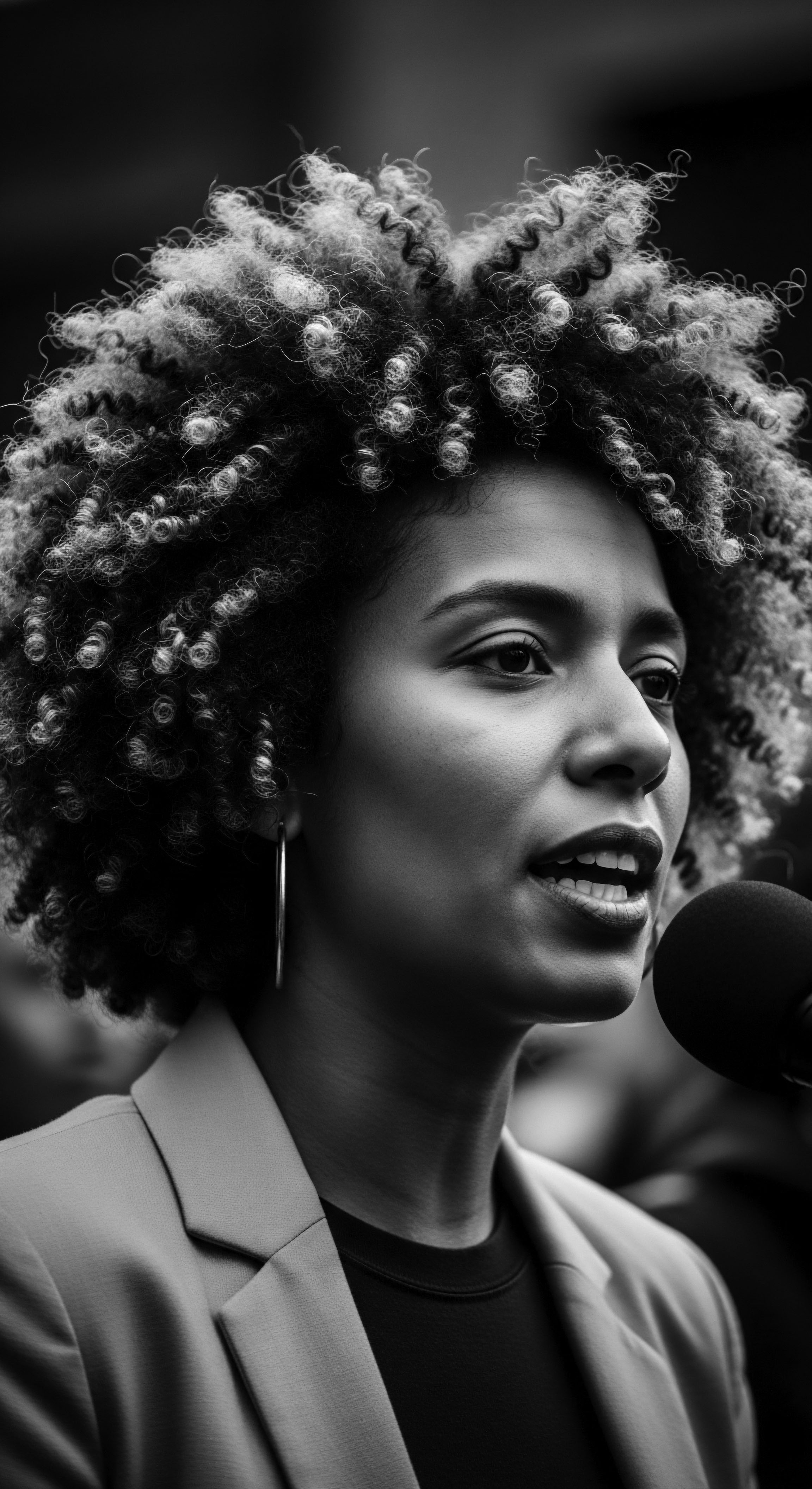
The Chemical Interruption of Hair’s Design
Chemical relaxers, when they entered the historical landscape, presented a stark alternative. These formulations, primarily alkaline in nature, function by disrupting the very disulfide bonds that give textured hair its characteristic shape and strength. A strong alkali, such as sodium hydroxide (lye), works by swelling the hair shaft, forcing open the cuticle layers, and then breaking these vital bonds. This process effectively reconfigures the hair’s internal structure, transforming its coiled pattern into a straighter form.
While offering an immediate visual change, this chemical alteration fundamentally compromises the hair’s inherent integrity. The hair’s natural architecture, honed over generations, becomes forcibly remade.
Chemical relaxers represent a historical divergence from ancestral hair practices, fundamentally altering the natural structure of textured hair.
The impact extends beyond the mere appearance of straightness. The process can strip the hair of its natural lipids, leaving it porous and prone to moisture loss. This altered state often leads to significant issues, including brittleness and reduced elasticity. The scalp, too, often bears the brunt of these powerful chemicals.
Chemical burns, irritations, and sensitivities became common experiences for many who sought this transformation. This physical toll stands in sharp contrast to the gentle, nourishing touch of ancestral methods.

Understanding Textured Hair’s Ancestral Forms
The diverse classifications of textured hair, often discussed in modern contexts using numerical and alphabetical systems, only begin to hint at the vast spectrum of hair found across African and diasporic peoples. Before such classifications, communities recognized hair differences through lived experience, acknowledging the unique needs of each hair type within their communal care practices. The hair’s density, its curl pattern’s tightness, its porosity, and its width all play a part in how it behaves and how it responds to care.
- Coiled Patterns ❉ Often exhibit very tight, small spirals, which can be delicate yet possess great volume when nurtured.
- Wavy Textures ❉ Exhibit a distinct ‘S’ shape, less tight than coils, offering fluidity in movement.
- Kinky Forms ❉ Can have zig-zag patterns or very tight, undefined curls that are dry and resistant, yet exceptionally resilient when respected.
The introduction of chemical relaxers, however, often collapsed these distinctions under a singular goal ❉ straightness. This presented a uniformity that disregarded the natural diversity and beauty held within various textured hair types. The pursuit of a homogenized aesthetic, influenced by external standards, began to redefine perceptions of hair health and beauty within communities that had previously celebrated their hair’s natural expression.
The fundamental lexicon of hair, once steeped in terms describing curls, twists, and natural shapes, started to encompass the terminology of chemical alteration ❉ “new growth,” “touch-up,” “base,” and “no-base.” These terms speak to an ongoing cycle of chemical intervention, a commitment to maintaining an altered state rather than simply caring for an inherent one. This shift in language mirrors a deeper cultural adjustment, where the maintenance of a chemically altered texture became a normalized part of daily life for many.

Hair Cycles and Environmental Echoes
Hair grows in cycles ❉ anagen (growth), catagen (transition), and telogen (rest). Each strand moves through these phases independently, leading to a continuous renewal of the hair. Historical environmental factors, like diet, climate, and ancestral health practices, naturally shaped the health and growth of hair.
A diet rich in traditional foods, for instance, contributed to the body’s overall wellness, which in turn supported healthy hair growth. Sunlight exposure, natural herbs, and oils used for cleansing and moisturizing were also components of this holistic system.
With the widespread adoption of chemical relaxers, a new set of environmental influences entered this equation. The chemicals themselves became a dominant factor, often overriding the body’s natural inclination for healthy growth. The constant application of relaxers, particularly on the sensitive scalp, interfered with the natural hair growth cycle, sometimes leading to compromised follicles and patterns of hair thinning. This historical intervention stands as a stark testament to how external chemical pressures introduced new challenges to the inherent resilience of textured hair.
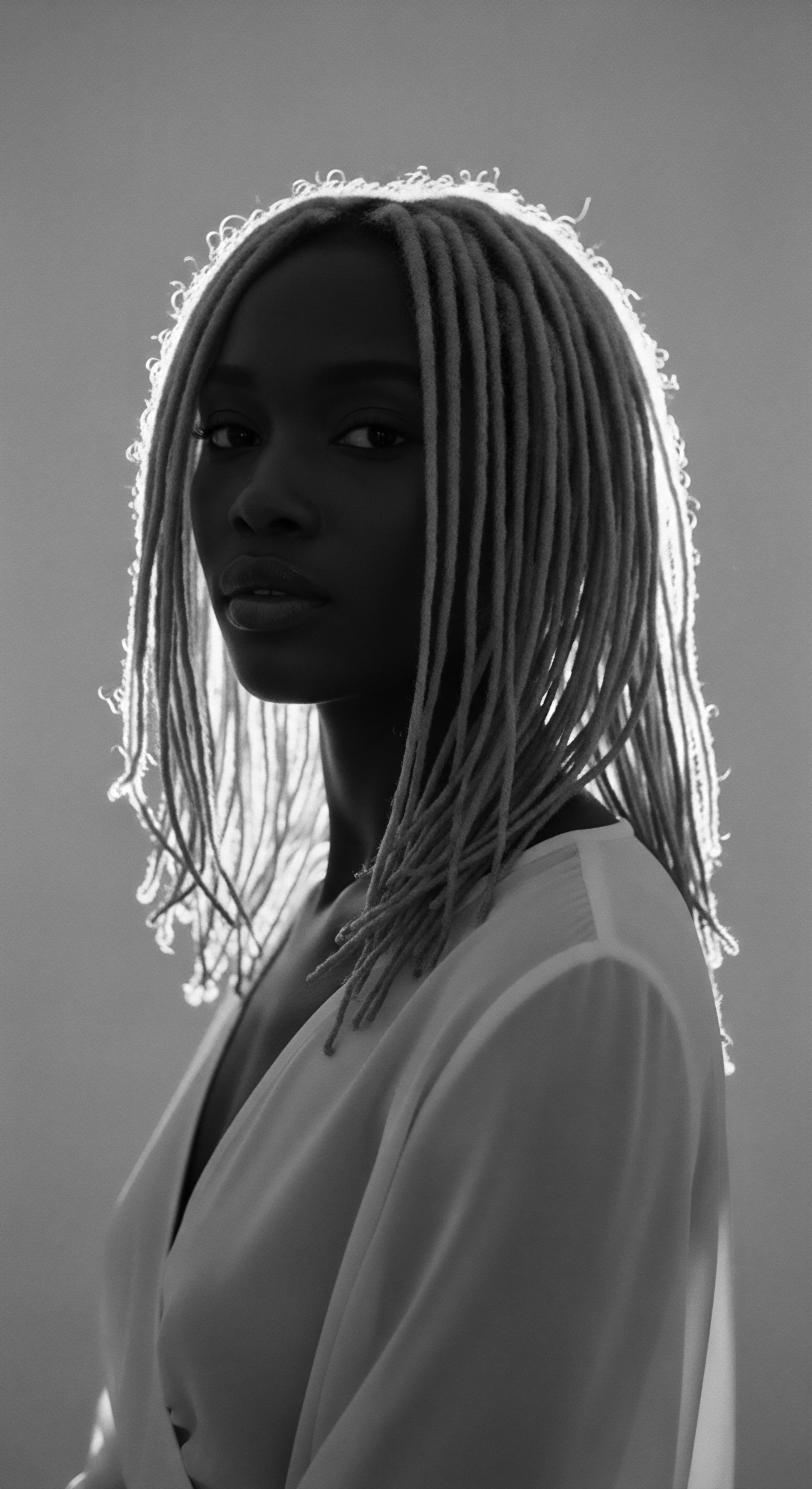
Ritual
Hair styling has always held a profound place within communities of African descent, functioning as a vibrant expression of communal bonds, individual identity, and ancestral connection. Long before the advent of chemical straighteners, elaborate styling practices served as powerful visual language, communicating social standing, marital status, and even spiritual beliefs. The very act of preparing and styling hair was often a shared moment, a time for stories, songs, and the quiet passing of wisdom from one generation to the next.
Into this rich heritage of natural artistry, chemical relaxers introduced a different kind of styling ritual. This new practice, born from a desire for integration into societies that often valued Eurocentric aesthetics, promised a radical transformation of hair texture. The promise of “manageability” and the allure of flowing, straight strands became a compelling force for many Black women and men. This shift was not merely aesthetic; it was deeply intertwined with social pressures and economic opportunities in a world that frequently judged worth based on appearance.

Transformative Pursuits and Social Pressures
The application of a chemical relaxer became a significant event, often performed in salons that served as social hubs, or in homes, where family members and friends gathered to assist in the process. The characteristic smell of the chemicals, the careful sectioning of hair, the precise application of the creamy mixture, and the meticulous rinsing—these actions became part of a new set of communal practices. While the results offered a coveted look, the experience was frequently accompanied by discomfort, a stinging or burning sensation on the scalp, a price paid for conformity. This era saw the rise of the “creamy crack,” a colloquial term that conveyed both the perceived ease of the product and its addictive nature, given the constant need for retouching new hair growth.
Chemical relaxers became a new styling ritual, offering desired straightness but often demanding a physical toll and continuous upkeep.
Protective styling, deeply rooted in ancestral methods, traditionally involved styles like braids, twists, and cornrows that minimized manipulation and shielded hair from environmental elements. These styles not only protected hair but also celebrated its natural form, often adorned with cowrie shells, beads, or precious metals, each carrying symbolic meaning. With relaxed hair, the concept of protection shifted.
Silk scarves and bonnets became essential for preserving the straightened texture overnight, guarding against breakage and maintaining the smooth appearance. However, the inherent fragility of chemically altered hair meant that damage was often inevitable, regardless of protective efforts.
Natural styling and definition techniques, before relaxers, centered on methods that enhanced existing curl patterns, relying on water, natural oils, and the hands to shape and define. The techniques were about accentuating the hair’s natural beauty. When hair was relaxed, the focus changed to maintaining straightness, often requiring the use of heat tools like flat irons and curling irons to smooth any remaining waves or to style the now-straight strands. This introduced another layer of potential harm, as heat on already compromised hair could exacerbate dryness and breakage.
| Aspect of Care Core Philosophy |
| Ancestral Practices Working with natural hair forms, honoring inherent texture. |
| Chemical Relaxer Era Practices Altering hair structure for straightness, seeking conformity. |
| Aspect of Care Key Ingredients |
| Ancestral Practices Plant-derived oils (e.g. shea butter, coconut), herbal rinses. |
| Chemical Relaxer Era Practices Strong alkaline chemicals (e.g. sodium hydroxide, guanidine carbonate). |
| Aspect of Care Styling Intent |
| Ancestral Practices Enhancing natural coils, braids, and twists; symbolic adornment. |
| Chemical Relaxer Era Practices Achieving sleek, straight styles; reducing natural curl volume. |
| Aspect of Care Community Aspect |
| Ancestral Practices Communal grooming, shared rituals, intergenerational knowledge transfer. |
| Chemical Relaxer Era Practices Salon visits, at-home application often involving assistance, shared experience of "beauty pain." |
| Aspect of Care This comparison underscores a historical shift from reverence for inherent hair nature to a pursuit of an altered aesthetic, with significant health trade-offs. |

The Textured Hair Toolkit Across Time
The tools of hair care reflect these shifts in philosophy. Historically, combs carved from wood or bone, simple picks, and the skilled use of fingers were primary instruments. These tools aided in detangling, sectioning, and shaping hair in ways that respected its coiled nature. The advent of chemical relaxers brought new tools and techniques into prominence.
Application brushes, plastic gloves, and specific neutralizing shampoos became standard. The hot comb, a tool predating relaxers but often used to achieve straightness, also remained a staple, its hot metal teeth gliding through hair, often after the chemical process, to achieve desired smoothness.
The historical demand for straighter hair was driven by complex socio-economic forces. During periods of segregation and racial discrimination, conforming to dominant beauty standards was often perceived as a pathway to social acceptance, employment opportunities, and even safety. Black women, in particular, faced immense pressure to present themselves with “acceptable” hairstyles in professional and public settings. This deeply ingrained societal expectation contributed to the sustained popularity of relaxers, despite their known physical discomfort and long-term health implications.
The transformations wrought by relaxers were not just on the hair itself, but on the perception of self. For some, it provided a sense of liberation from daily styling struggles and the burden of managing tightly coiled hair in a society not designed for it. For others, it became a source of internal conflict, a tension between ancestral self-acceptance and societal demands.
This internal struggle, played out on the canvas of the scalp, is a poignant part of the textured hair heritage. The choice to relax or not to relax often mirrored broader discussions about racial identity, authenticity, and navigating a world that did not always celebrate Blackness in its natural forms.

Relay
The historical journey of chemical relaxers reveals a complex interplay of personal aspiration, societal pressure, and scientific understanding, especially concerning the enduring health of textured hair. While the initial allure of straightened hair presented a pathway to perceived social and professional conformity, the long-term biological consequences have become increasingly clear over decades. The pursuit of a desired aesthetic often came at a significant cost to the physical integrity of the hair and the well-being of the scalp, challenging traditional notions of holistic care rooted in ancestral wisdom.
Early formulations of chemical relaxers, particularly those employing high concentrations of lye, were inherently corrosive. Accounts from the mid-20th century are rife with testimonies of scalp burns, scabbing, and chronic irritation following relaxer applications. This trauma to the scalp created pathways for chemical absorption into the bloodstream, raising concerns about systemic health impacts beyond the immediate cosmetic effects. The historical prevalence of these scalp injuries contributed to a gradual weakening of hair follicles, leading to various forms of hair loss.
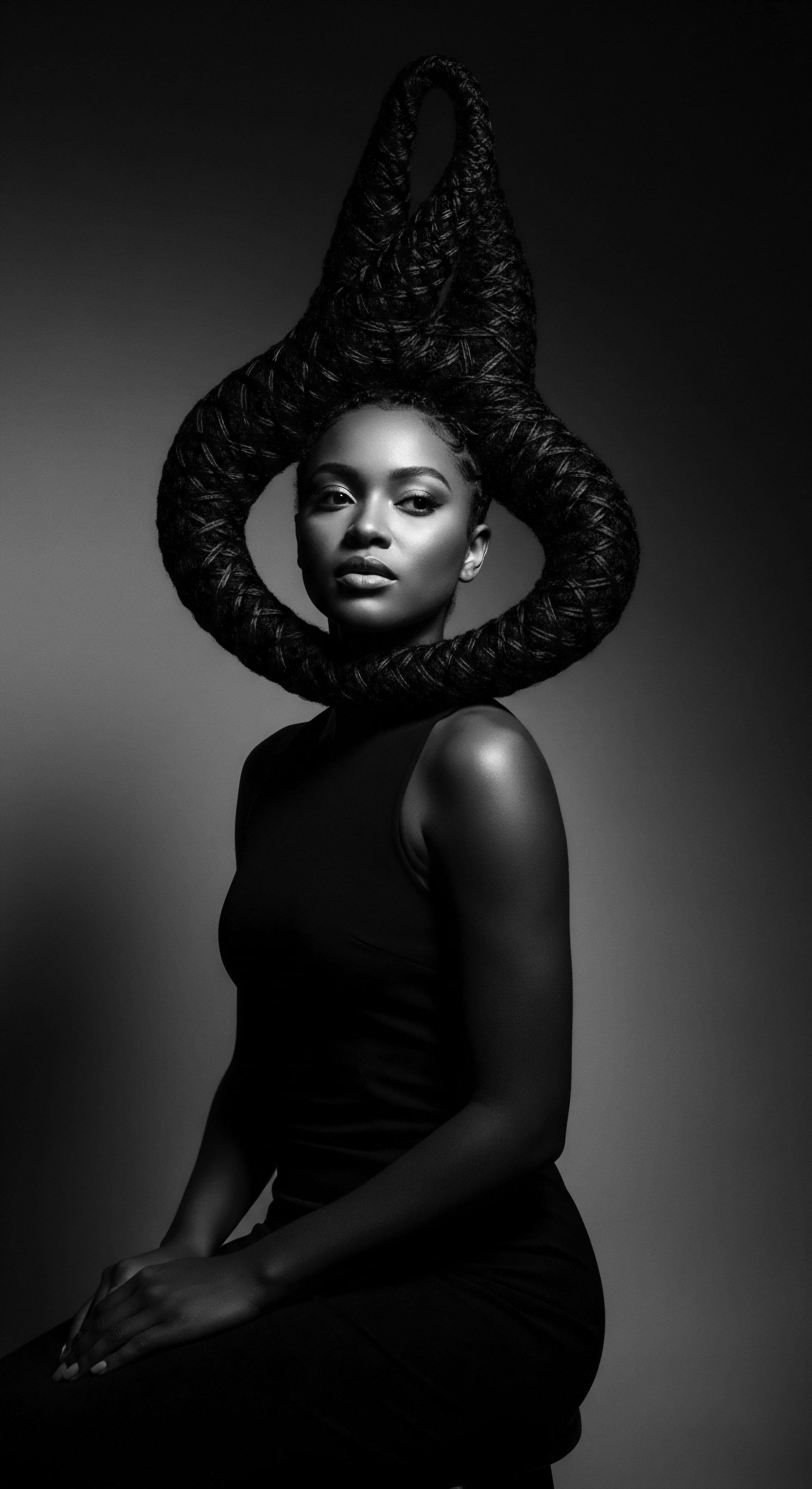
Unveiling Health Consequences of Chemical Treatments?
One of the most documented and distressing long-term consequences of consistent chemical relaxer use is the development of Central Centrifugal Cicatricial Alopecia (CCCA) . This scarring alopecia, primarily affecting women of African descent, leads to permanent hair loss, typically starting at the crown of the head and spreading outwards. While the exact cause of CCCA is still being researched, a strong association has been noted with chemical hair relaxers and other hair care practices that cause tension or inflammation to the scalp.
The chronic inflammation induced by caustic chemicals can destroy hair follicles, replacing them with scar tissue, thereby preventing any future hair growth in affected areas. This devastating condition profoundly impacted personal identity and community perceptions of beauty, creating visible markers of historical hair practices.
Frequent chemical relaxer use has historically contributed to scalp damage and various forms of permanent hair loss, including Central Centrifugal Cicatricial Alopecia.
Beyond direct hair and scalp damage, contemporary scientific research, building on decades of observation, has shed light on broader health concerns. A study published by the Boston University Black Women’s Health Study (BWHS) reported a significant connection between long-term use of chemical hair relaxers and increased risk of certain cancers. Specifically, postmenopausal Black women who used hair relaxers more than twice a year or for over five years showed a greater than 50% increased risk of uterine cancer (Boston University, 2023). This data, rooted in a large cohort study, offers a sobering perspective on the unseen toll of historical beauty standards and chemical interventions.
The chemicals often found in relaxers, such as phthalates, parabens, and formaldehyde-releasing agents, are known endocrine-disrupting chemicals (EDCs). These substances can mimic or interfere with the body’s hormones, potentially influencing reproductive health and increasing the risk of hormone-sensitive cancers.
The cumulative exposure to these chemicals over years, often starting in childhood for many Black women, has raised serious alarms regarding health disparities. Up to 95% of adult Black women in the U.S. have reported using hair relaxers at some point in their lives, with many beginning at a very young age. This widespread historical usage underscores the depth of the cultural context and the systemic pressures that normalized these practices.
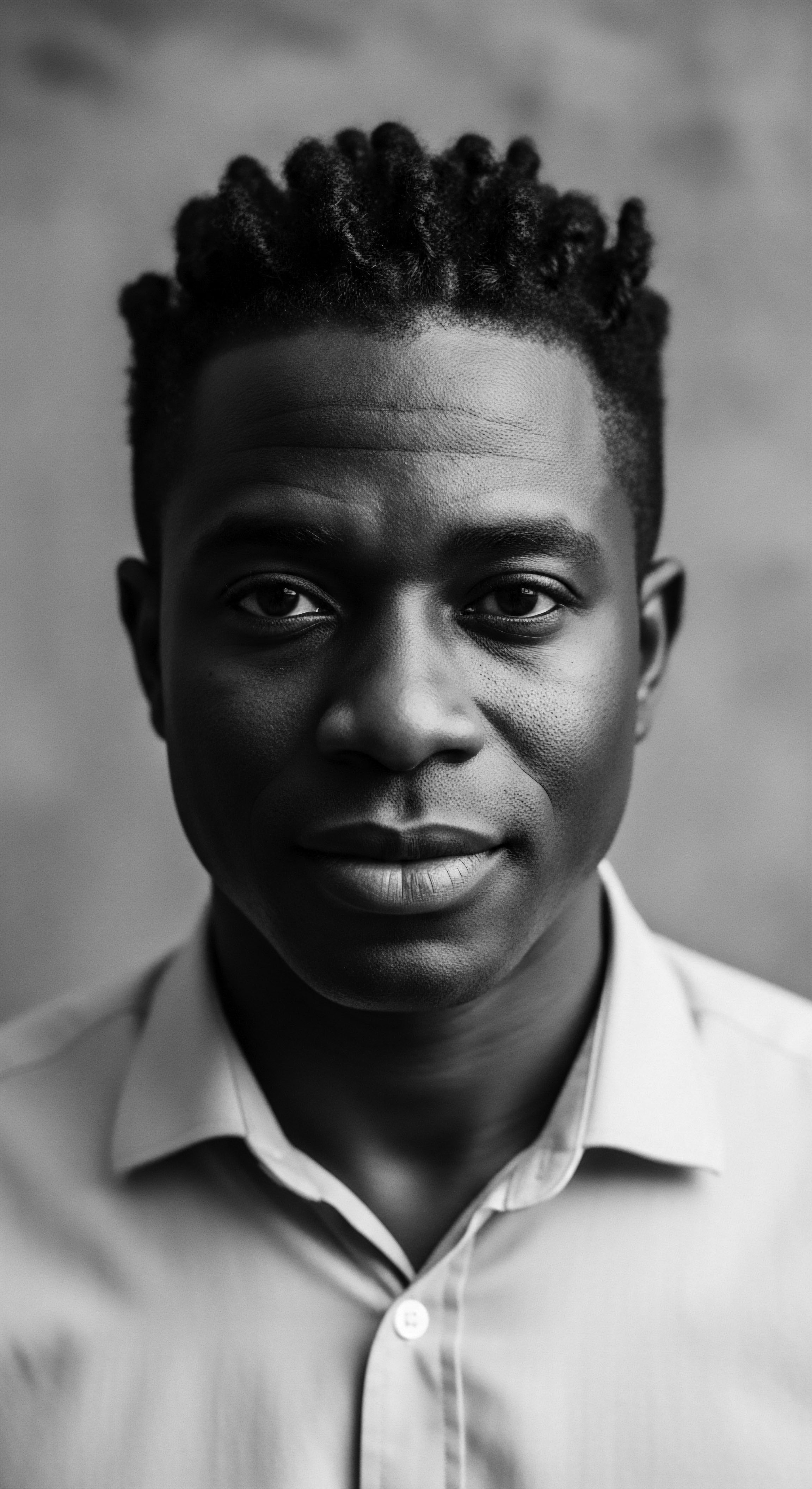
Adapting Regimens Through Ancestral Wisdom?
In response to the visible damage and later, the scientific revelations, many in the textured hair community began to re-evaluate their hair practices. This re-evaluation often drew from a wellspring of ancestral knowledge, shifting toward holistic care. The concept of building personalized regimens, once an implicit part of traditional care, saw a resurgence. This involved recognizing individual hair needs and selecting ingredients that supported natural health, not chemical alteration.
For generations, the nighttime ritual held special significance in hair care. Wrapping hair, braiding it, or using simple coverings were common practices for preservation. With the relaxation movement, protecting the straightened style overnight became even more critical to prevent reversion and breakage. The bonnet , a seemingly simple accessory, became a ubiquitous tool for maintaining straightness and guarding against friction on pillows.
This historical adaptation of an older protective custom speaks to the lengths individuals went to preserve their chemically altered styles. Yet, the wisdom of truly nourishing hair through the night, a practice long understood in ancestral traditions, often involved deep oiling and gentle handling to promote moisture retention rather than simply preserving a straight form.
When addressing issues like breakage, dryness, or thinning hair, the reliance on ancestral knowledge became a powerful counter-narrative to the chemical solution.
- Shea Butter ❉ A venerated ingredient, known for its moisturizing and emollient properties, used traditionally to seal in moisture and condition the hair shaft.
- Coconut Oil ❉ Applied for its penetrating ability, strengthening the hair from within and adding a natural luster.
- African Black Soap ❉ Used for gentle cleansing, often combined with herbs to create a purifying wash that respects the scalp’s natural balance.
- Aloe Vera ❉ Applied to soothe irritated scalps and provide hydration, reflecting ancient healing practices.
These natural elements stand in stark contrast to the aggressive chemical action of relaxers, demonstrating a preference for gentle replenishment over harsh alteration.

The Holistic Scope of Hair Wellness
The shift in understanding hair health extends beyond topical applications. Ancestral wellness philosophies often view the body as interconnected, where physical health reflects spiritual and emotional well-being. This perspective suggests that healthy hair springs from a healthy inner state.
When considering the historical impact of chemical relaxers, a holistic lens reveals how the pressure to conform to external beauty standards could create internal disharmony. The stress of maintaining an altered appearance, coupled with the physical discomfort and potential health risks, affected more than just the hair; it touched the holistic self.
Problem-solving within this heritage framework involves looking beyond immediate symptoms to address underlying causes. For relaxed hair, this meant confronting the cycle of damage and breakage. For many, this eventually led to the decision to transition away from relaxers, embracing their natural textures once more.
This “natural hair journey” became a collective act of reclaiming identity, self-acceptance, and ancestral connection, embodying resilience. It called for patience, a deeper understanding of one’s own hair, and a return to gentler practices.
The contemporary conversation surrounding hair health, particularly for textured hair, continues to be shaped by this historical experience. The data on health risks, coupled with the increasing appreciation for diverse hair forms, compels a re-evaluation of past norms. The relay of knowledge from one generation to the next now carries a renewed emphasis on ancestral wisdom, caution regarding chemical interventions, and a celebration of hair in its most authentic, healthy state. This deeper awareness allows communities to move forward with informed choices, honoring the legacy of their hair while prioritizing its well-being.
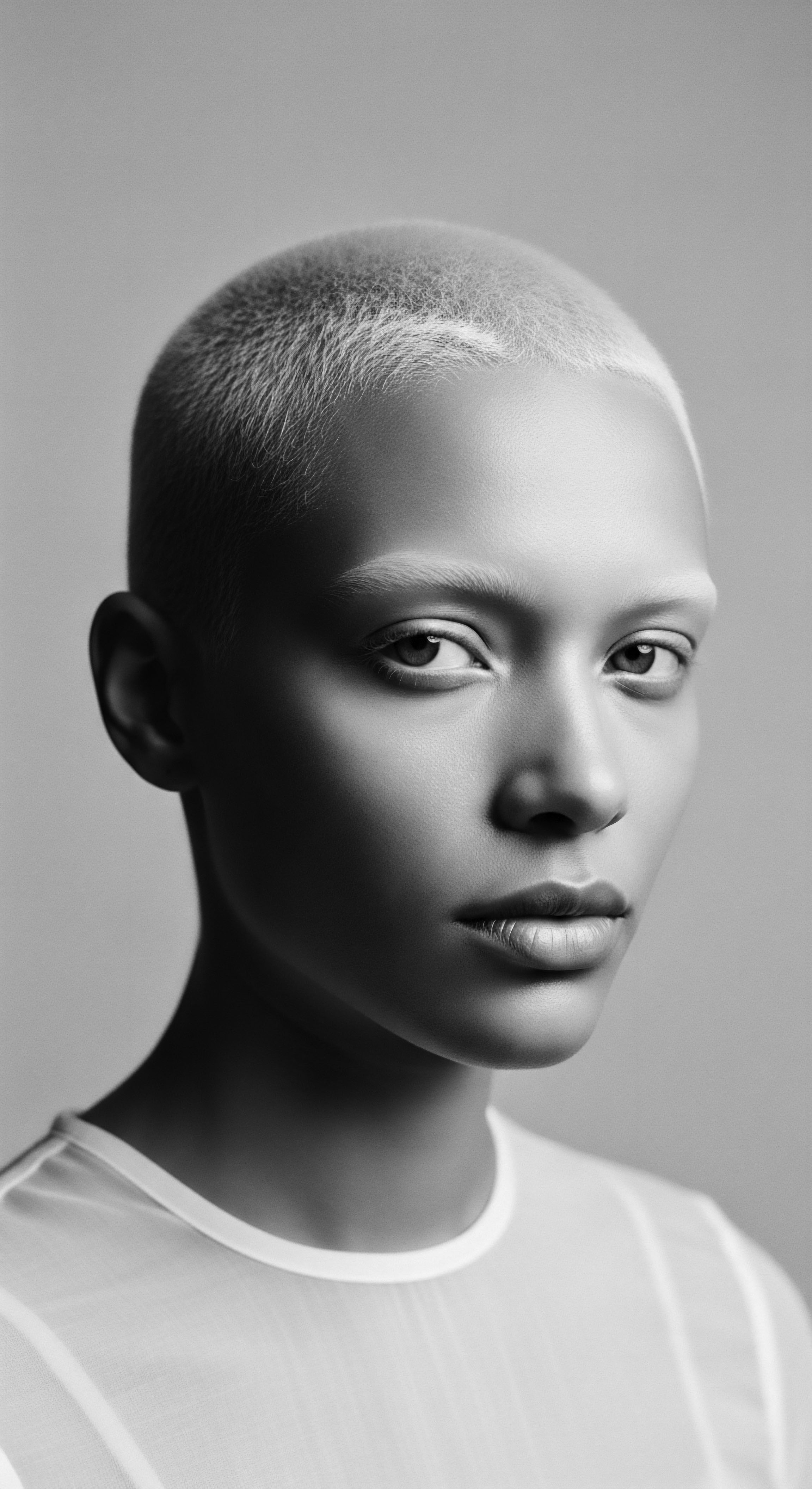
Reflection
The journey of textured hair through the ages, culminating in the era of chemical relaxers and the subsequent reawakening, reveals a profound story of resilience, adaptation, and an enduring connection to heritage. What started for many as a simple desire for a perceived beauty standard transformed into a complex dialogue about identity, health, and ancestral wisdom. Our hair strands, those delicate coils and vibrant kinks, truly hold the soul of a strand—a living memory of triumphs and trials.
The historical presence of chemical straighteners stands as a poignant chapter in the larger narrative of Black and mixed-race hair. It highlights societal pressures that once pushed many to alter their inherent beauty, often at significant personal cost. Yet, even in this era of chemical intervention, the spirit of adaptation shone through.
Communities formed around shared experiences in salons and kitchens, developing new care rituals, albeit within the confines of chemical maintenance. This collective experience, though sometimes physically taxing, also solidified communal bonds and shared understanding.
Today, as we look back, the historical impact of chemical relaxers guides our path forward. The scientific understanding of their effects, coupled with a renewed appreciation for ancestral hair care practices, creates a more informed landscape. We see a vibrant return to honoring natural textures, a reclaiming of inherent beauty that echoes the traditions of generations past.
The wisdom gleaned from the relaxer era reminds us of the power of choice, the importance of self-acceptance, and the profound connection between our hair’s well-being and our holistic self. It speaks to the ongoing strength of a heritage that endures, ever adapting, ever teaching, and always inspiring a deeper love for the authentic beauty of every strand.

References
- Byrd, Ayana D, and Lori Tharps. Hair Story ❉ Untangling the Roots of Black Hair in America. St. Martin’s Press, 2001.
- Boston University School of Public Health. Black Women’s Health Study on Hair Relaxer Use and Uterine Cancer. Boston University, 2023.
- Gambrell, William, and Katerina S. Nau. “Central Centrifugal Cicatricial Alopecia ❉ Overview of Disease and Management.” Journal of Drugs in Dermatology, vol. 22, no. 12, 2023, pp. 1195-1200.
- McMichael, Amy J, et al. “Central Centrifugal Cicatricial Alopecia.” DermNet. Last reviewed June 2023.
- Olasode, Olusola A. “Chemical Hair Relaxation and Adverse Outcomes Among Negroid Women in South West Nigeria.” Journal of Pakistan Association of Dermatologists, vol. 19, no. 4, 2009, pp. 203-207.
- Park, Youngmee, et al. “Hair Straightener Use and Risk of Uterine Cancer.” Journal of the National Cancer Institute, vol. 114, no. 12, 2022, pp. 1656-1662.
- Sishi, Ntombenhle, et al. “Hair relaxers tested by UCT lab found to be corrosive to skin.” South African Medical Journal, vol. 110, no. 3, 2020.
- Wilcox, Amanda. “Femininity, Hair Relaxers, and the Impact of Beauty Standards on Black Women’s Health.” Gender, Work & Organization, vol. 25, no. 5, 2018, pp. 696-710.
